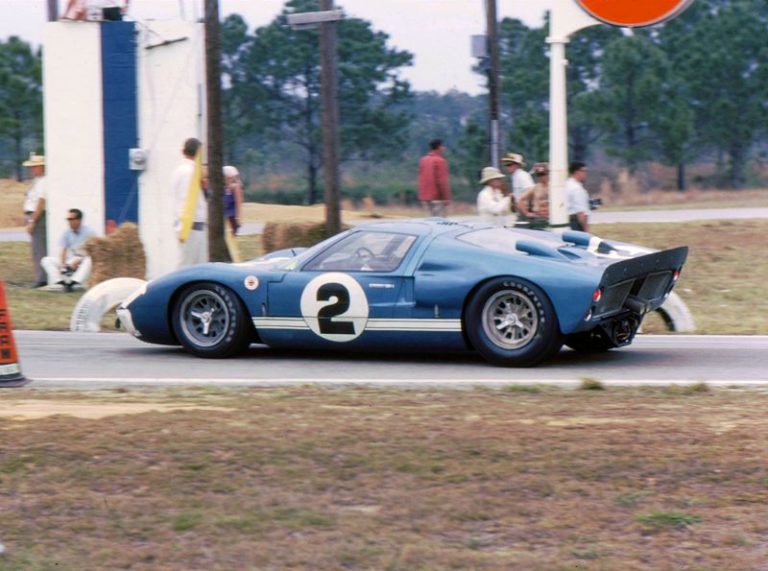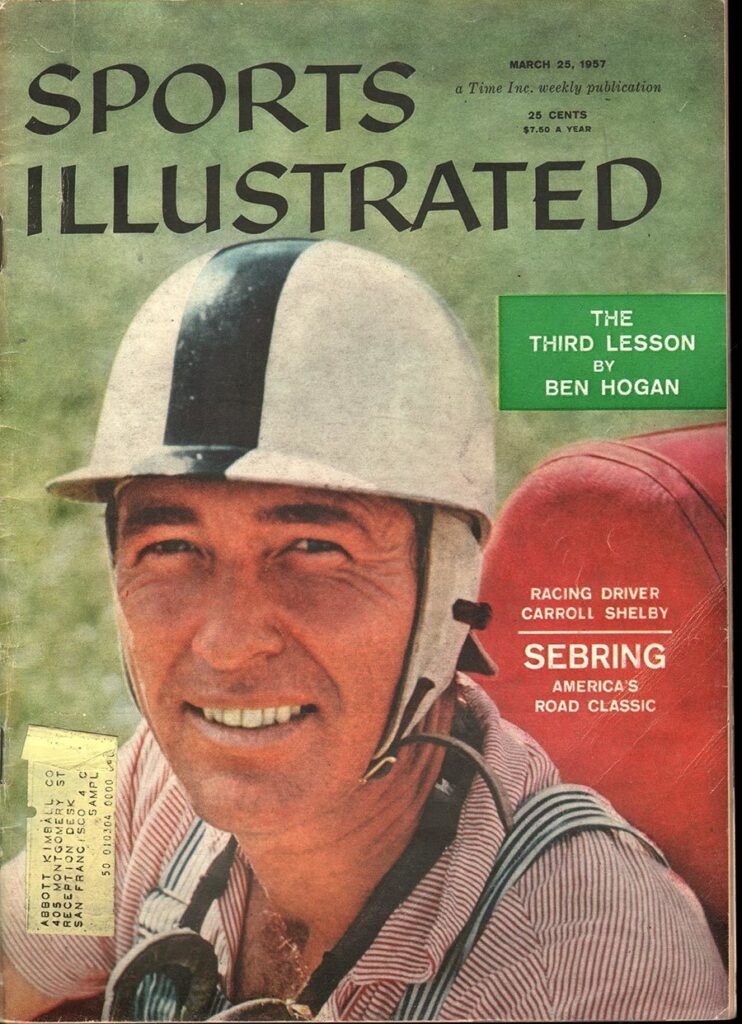
Learning about my car caused me to delve deeply into the whole Carroll Shelby story. The more I read, the more fascinated I was with his story. I ended up not only being a big fan of the Shelby cars but also the man himself.
If you don’t happen to know the Carroll Shelby story then you might be wondering what the big deal is about Shelby & Cobra Mustangs. I will briefly summarize the story.
Carroll Shelby grew up in Texas. During the second World War he joined the Army Air Corp and became an instructor. After the war, he headed back to Texas and tried different things to earn a living, like raising chickens which turned out to be a disaster for him. During those years he got interested in racing cars. In fact he got so good at driving the racing cars of the time that he ended up in Europe driving for several leading European teams.
Shelby was pretty successful at his racing career. He won at LeMans in 1959 driving an Austin Martin on John Wyers’ team. He became known as one of the few American drivers racing in Europe. But fate did not allow him to continue his racing career. Shelby had a heart issue that eventually ended his racing career in 1959.
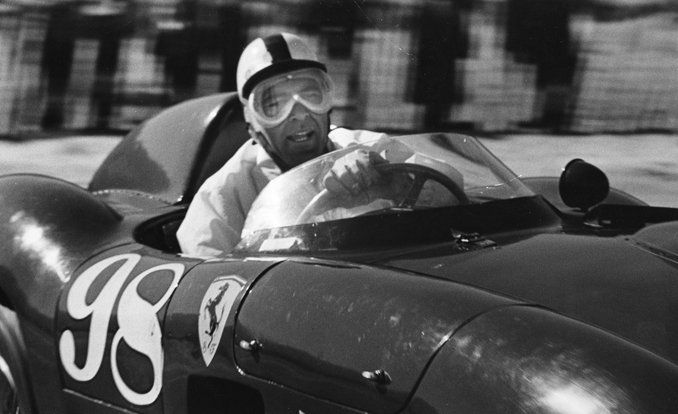
Shelby came back to the US looking for a business to get involved with. He managed a tire rep contract with Goodyear Tires. He rented office space from Dean Moon in California to run his tire business out of. (Do you remember the Moon hubcaps? Dean is that Moon.)
Shelby loved racing and had a dream of taking a European sports car and stuffing an American mass produced V8 engine into it. Why a European sports car and not an American car? At this time, no American car would have been considered a sports car. In the late 50’s and early 60’s American cars were big boats with poor handling at best. But the American small V-8 engines were coming into their own. Small engines (displacement) with good horsepower.
Shelby got word that the AC Car Company in England had lost access to Bristol engines. The AC Ace sports car was well known in Europe and by Shelby. Step two in this story was he needed a small block engine. He went to GM and tried to sell them on supplying engines. But GM already had their own version of an American sports car, the Corvette, so there was no interest in creating a competitor to the Vette. So next stop was Ford. Ford had recently introduced the 221 cid V-8. A perfect size engine for the Ace. The story goes something like this. He told Ford that he had an ACE body and needed a 221 engine to put in the body. And he went to AC and told them he had the engines and needed a body to try this out on. Some how this came together and both companies shipped him what he needed.
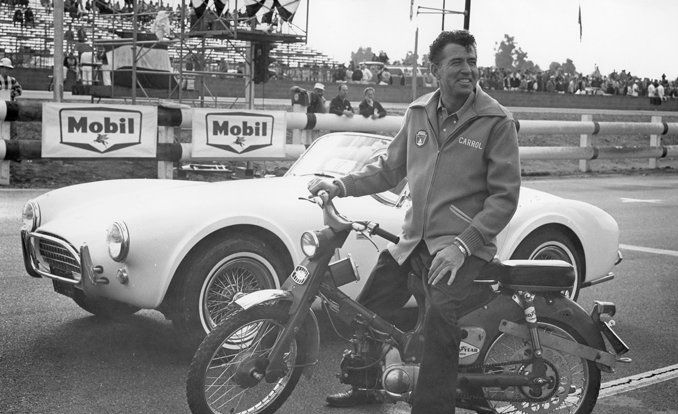
At Dean’s shop in Venice, CA, in 1962, Shelby and Moon stuffed that 221 engine into the ACE. Apparently it took them all day and into the night to hookup it. I’ve read that a lot of alcohol was involved. Late into that night, they got the engine installed. Thus was born the AC Cobra. The two of them had great fun driving the new toy around in the night.
This is the real short version of the story for sure. You’ll want to read more about this colorful story. Shelby published a biography before he died that is full of great stories.
Anyway, Shelby knew he had something very special using that ACE body and the Ford engines. Ford changed the 221 to a 260 which is what the early Cobras got. Shelby organized a company to assemble the Cobras. Lucky for him he was in southern California, the car culture capital of the US. He enlisted some of the best talent in the area. These guys all had experience taking an car, American or whatever, and stuffing a big American engine in it which is what the AC Cobra was. The Shelby American team sorted out and fixed the issues as they occurred. The Cobra evolved into a legendary sports car.
Here’s a significant side note. So GM turned Shelby down because they already had a sports car, the Corvette. In fact it was the only American sports car. In 1963, the split window Corvette was introduced. This was a radical step forward for the Corvette. GM and Chevy were expecting some pretty great things from this unique car including racing victories. Enter the Shelby AC Cobra. The Cobra was so successful against all competing cars that the 63 Vette did not make the splash it would have. The Vette’s could not win against the Cobras on the track. In fact, the Cobra dominated every race it was entered in. The Shelby team modified the AC Cobra to compete in whatever the particular race was with great success. The other piece of this is Shelby was aiming the Cobra at beating the Ferrari’s in European racing. Winning in the US was practice.
In 1964 Ford introduced the Mustang. The Mustang was Lee Iacocca’s baby at Ford. He wanted the Mustang to have a racing reputation. Who better to do that than Carroll Shelby’s team. The story goes that Shelby told Iacocca that the Mustang was not a satisfactory car to race. But this wasn’t a request. So Ford shipped Shelby American some 1965 Mustangs for them to do their magic with them. Thus was born the 1965 Shelby GT 350. The SCCA rules said to race in the Production Class B, the race car had to also be sold on a retail basis. The retail version could have one change from the race car version, either the suspension or the engine. This was an easy choice. Offer the 1965 GT 350 with the racing suspension and use the Ford 289 HIPo engine. The 562 1965 GT 350’s were street race cars.
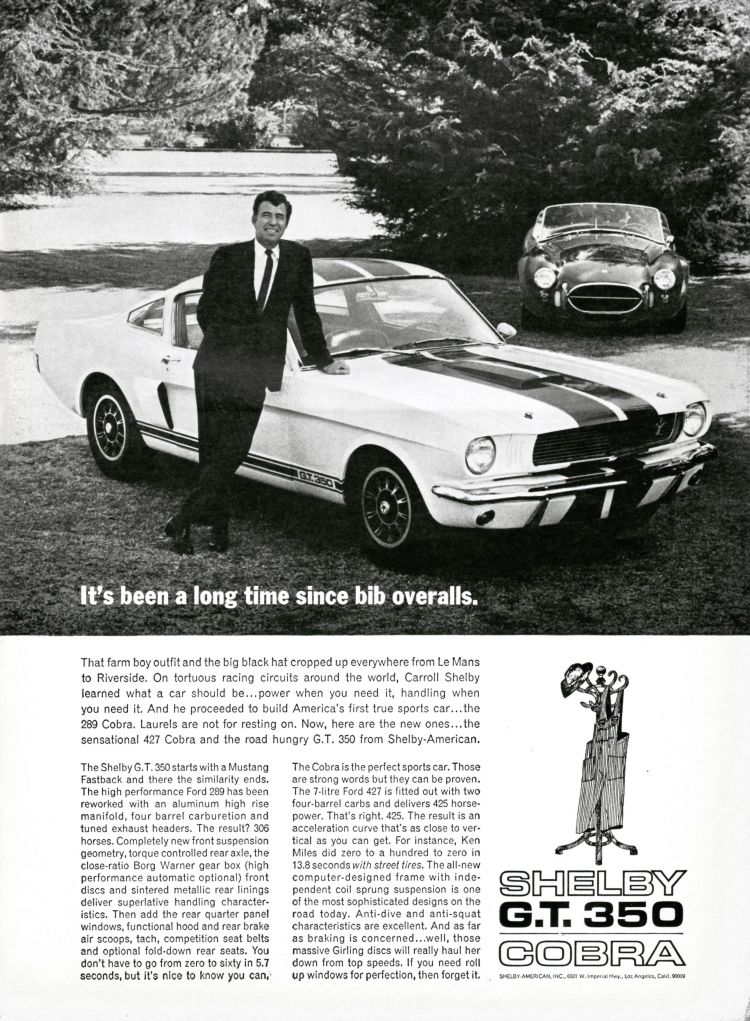
The 1966 Shelby Mustangs started as left over ’65 cars, titled as 1966 cars. When those were used up, the 1966 GT 350 became less of a race car and more of a Mustang GT with Shelby modifications.
In 1967, Ford introduced a new, bigger Mustang, that would hold a big block engine. By ’67, the car business was in the middle of a horse power war among the manufacturers. Cheapest way to get more horsepower was use a bigger engine. Shelby’s version of big block car was the 1967 GT 500 using Ford’s 428 police interceptor engine with two four barrel carbs. If I recall properly, it was a real special order to get the 428 engine in any other Ford from the factory. The Shelby big block cars came with it.
In 1968, Shelby American was expecting to sell even more cars after a great year in 1967. But the buyers were voting with their pocketbooks for less of a race car, and more of an awesome boulevard cruiser. 4,451 Shelby Mustangs were sold in 1968.
By 1969, everyone was competing with Shelby Mustangs, even Ford. All the manufacturers offered some pretty hot cars. In 1969 Ford offered the Mustang GT, the Mach 1 and the Boss 302 and 429 Mustangs. All these cars were direct competitors to buyers of Shelby Mustangs. 1969 turned out to be much weaker in sales. In fact, not all 1969’s were sold. The leftover ’69 cars were re-titled as 1970 cars. A total of 3,294 1969-70 Shelby Mustangs were sold. It was time to stop the production of the Shelby Mustangs.
By the way, you can see the Shelby Mustang influence in the 1969 Mustang Sportroof/fastback body. The 67-68 Shelby Mustangs also had the the duck tail spoiler and side scoops.
There are some great racing stories in the Shelby legend during these years. The movie Ford vs Ferrari is one of those stories. Ford wanted to win races in Europe. They tried to purchase Ferrari. Why not own the race team that was already winning in Europe? That deal fell through. I’ve read the two key reasons are 1) Enzo Ferrari wanted to continue to run the racing team which was not in Ford’s plans and 2) Enzo told Ford to fire Carroll Shelby. The deal was off.
Henry Ford II was not happy and was determined to come up with Ford’s own winning car. And he was willing to spend a ton of money to do that. They acquired the now famous GT 40 body from Eric Broadley at Lola in England. John Wyer, Aston Martin’s English racing team manager, was enlisted to race the cars. The first race with a Ford GT 40 was in May of 1964 at Nürburgring 1000 km race. But the results were a big disappointment. Lots of reasons but the one key reason is you have to finish a race to win it. The cars just couldn’t last long enough to finish, much less win.
The decision was made to give the GT 40 project to Shelby’s team for the 1965 season. About six weeks before the 1965 racing season, Ford shipped two beat up and broken GT 40’s to Shelby American. These cars had not be touched since their last race at Nassau. The were still in the same condition as they were in at the end of that race The Shelby team had little time to whip those cars into shape to start racing. First thing they did was pull the Ford Indy engines out and install the reliable and winning 289’s. The next thing was swap out the transmissions.
The Shelby team’s first race and success was at the Daytona 2000 in February of 1965. Ken Miles and Lloyd Ruby drove the car to victory. The team came in second at Sebring a month later. But the rest of the season was less successful. At LeMans the none of the GT 40’s lasted more than four hours. Ferrari won LeMans again in 1965.
The 1966 season was going to be different. Henry Ford II made it quite clear to his management team and Carroll Shelby those GT 40’s had better win LeMans. Ford’s Kar Kraft stuffed a 427 engine into the GT 40’s. This model was called the MK II. Ford setup two teams to ensure success, the Shelby American team and NASCAR team of Holman Moody. At Daytona in February 1966, the three GT 40’s finished 1-2-3, They did that again at Sebring, and LeMans as well. See the movie.
